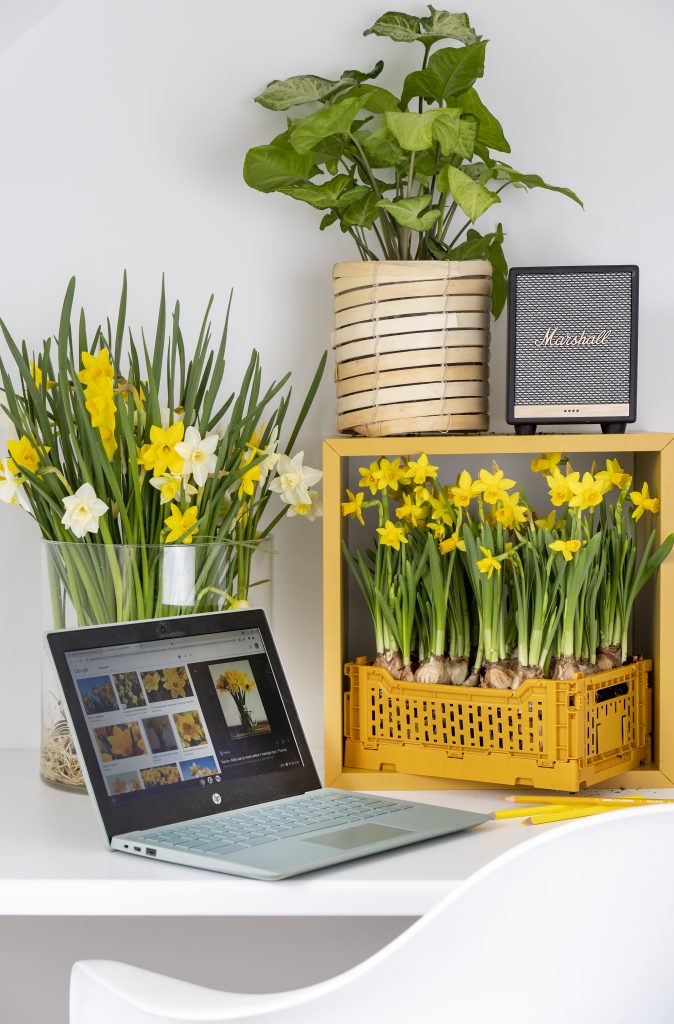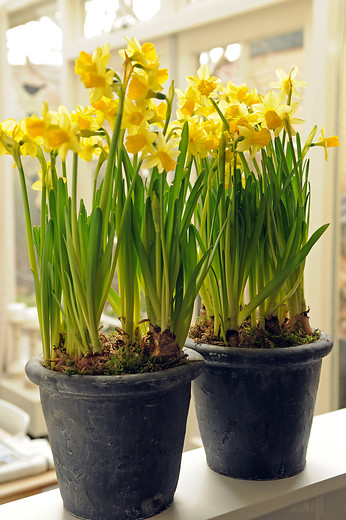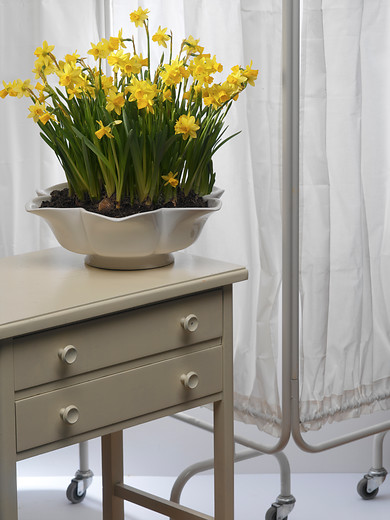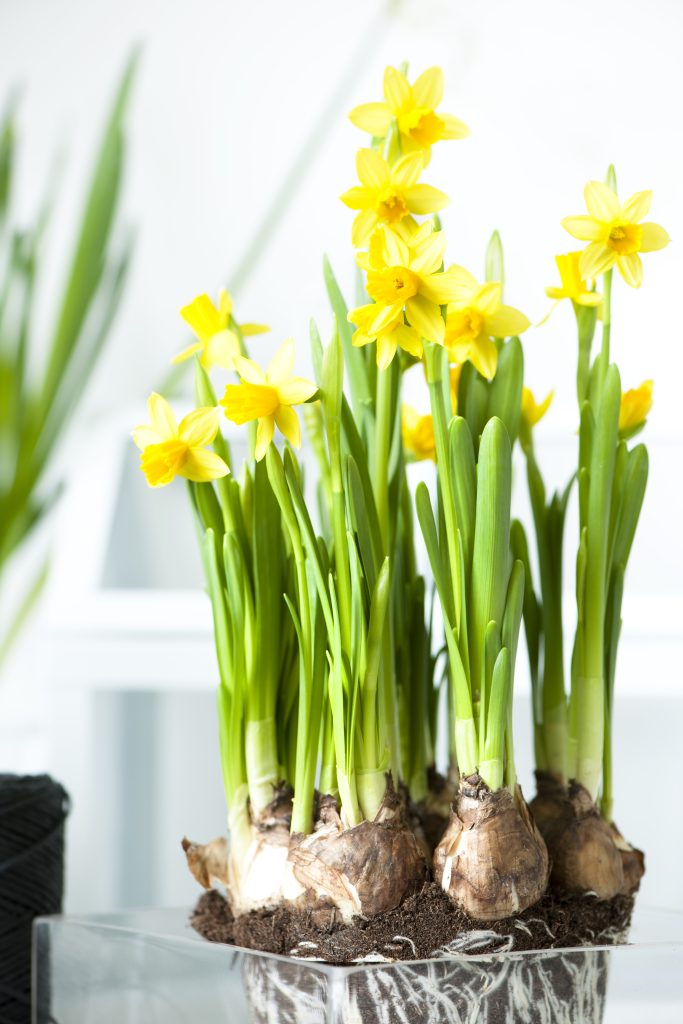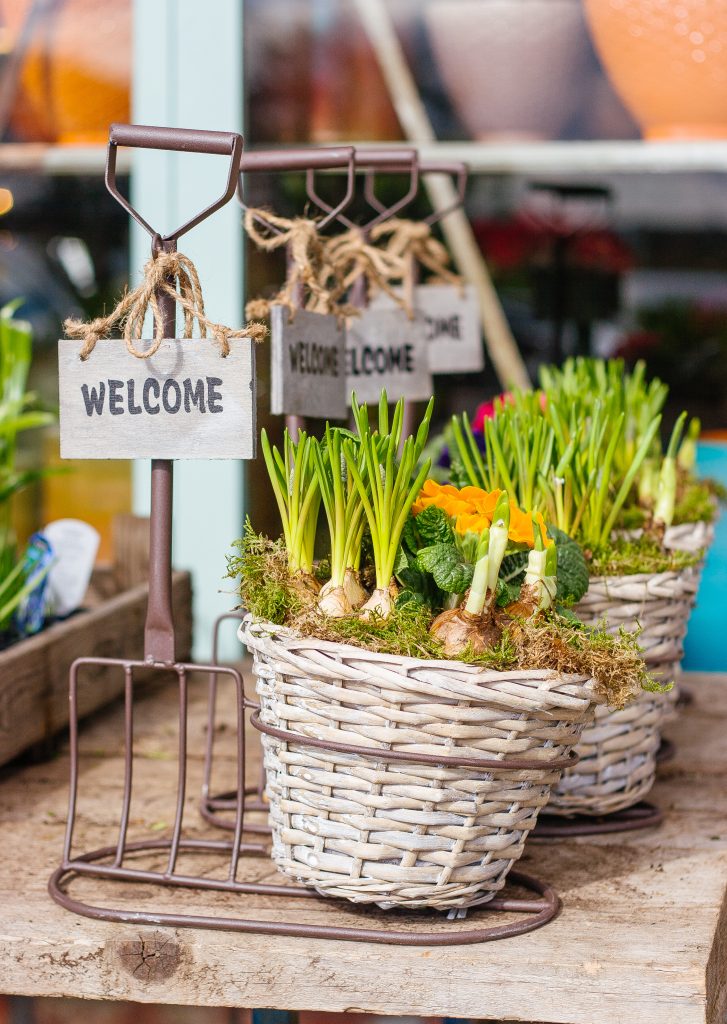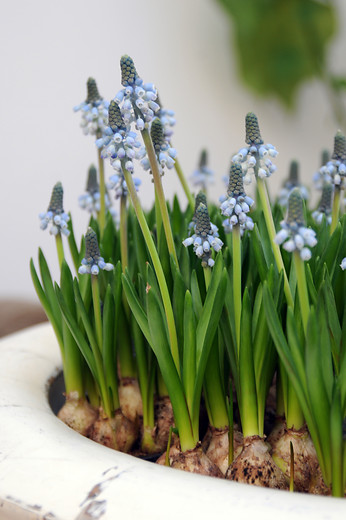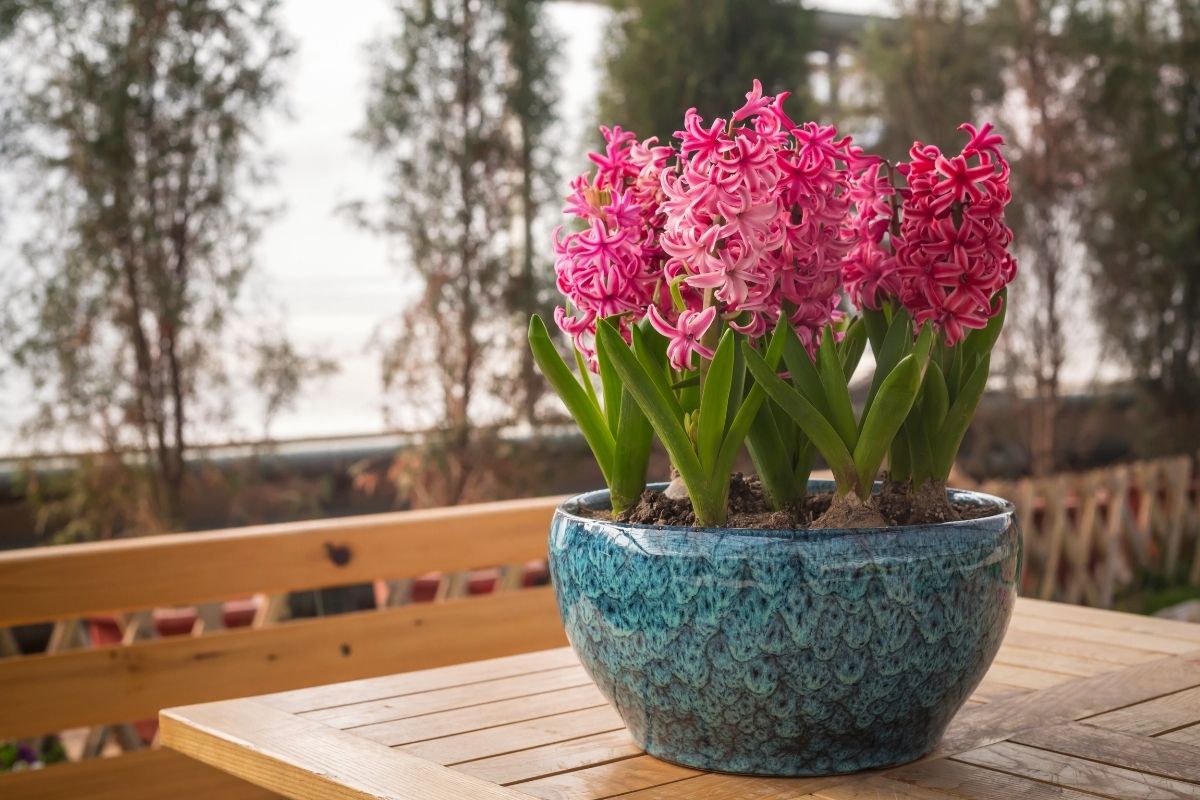
Anticipate Spring Flowers This Winter by Forcing Bulbs
Create your own showing of spring flowers by forcing bulbs indoors. Pots of sunny Tête à Tête Narcissi and Muscari are easy to force and come midwinter, you’ll welcome the brilliant colour and exquisite fragrance.
These hardy flowers bloom only after forcing bulbs, receiving a cold treatment that simulates winter. If you want spring flowers to bloom in January and February, pot up bulbs starting in October and continue through December. Winter can be a long season in Canada, so a colourful bowl of spring flowers on your kitchen table in March will wake up everyone and brighten the day.
Plastic or clay pots are suitable for forcing bulbs, just make sure your pot has drainage holes. I like using shallow 15 cm (6”) diameter “pan” pots. Cover the drainage holes with pebbles, clay pot shards or a paper coffee filter. For planting larger bulbs such as Tête à Tête Narcissus, fill the pot halfway full with a moistened potting soil mixture. If you’re planting smaller bulbs such as Muscari, Crocus, and Dwarf Iris, fill the pot three-quarters full.
Place the bulbs into the moistened potting soil root side down, setting tips or “noses” facing up. Snuggle the bulbs in close together, so that they are shoulder to shoulder but not quite touching. Usually, 4 – 6 bulbs will fill out a 15 cm (6”) pot.
When planting directly into the garden, the official rule is to set the bulb at a depth of 2 to 3 times the bulb height. This protects the bulbs from the elements, keeping them from freezing. When we’re forcing bulbs potted, we’re simulating the winter environment and bulbs should sit just below the soil surface. Plan to leave an inch between the soil surface and the rim of the container. Add just enough potting soil to barely cover the bulbs. It’s okay if their noses poke through the soil’s surface.
Florissa’s Tip:
Before they can bloom, all hardy bulbs require 13-15 weeks in a darkened cold location with steady temperatures of 4-9°C (38-48°F).
A dark cool cellar, basement, or unheated garage can offer suitable conditions. If you have a spare and empty refrigerator that still works, consider putting it to use. When you decide on the location, just remember to avoid placing pots next to ripening fruit such as apples and pears which will sterilize the bulbs.
Plan ahead for continuous blooms and plant up a pot every two weeks. Stack pots with a piece of cardboard layered in between them to keep them stable and tidy. Label the pots and your calendar with the date the bulbs go into cold treatment and the date when they finish. During this period, check the soil surface weekly. It should feel moist to the touch. If it looks dry, give the pot a drink of water letting any excess drain away, and then return it to chilling conditions.
Florissa’s Tip
After 13-15 weeks of chilling, bring the pots into a bright but cool 10-18°C (50-65°F) spot in a window.
You should see signs of green growth sprouting from the noses of the bulbs. Within 3-4 weeks, flower buds should appear, swell, and begin to fill with colour. Move the pot away from the window to a warmer indoor location and enjoy the blooms. Prolong the flowering by keeping the pot out of direct sunlight.
Remove the blooms when they are finished. Continue to keep the pot in a spot with bright indirect light and water when the soil surface looks dry. As soon as the ground outside thaws and the danger of frost is over, the bulbs can be planted directly into the garden. Forcing bulbs consumes a lot of energy from the bulbs, but with time they will return to regular seasonal spring flowers along with other spring bulbs in your garden.



